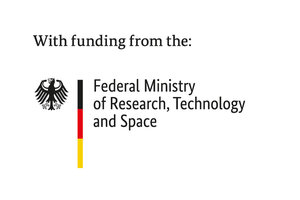KOMSENS-6G

The goal of KOMSENS-6G is to add another core functionality – besides communication – to the 6th generation (6G) mobile communications system: radio sensing. The project envisions the ability to sense the environment using mobile radio signals as essential and useful for future mobile radio systems – both in public spaces and in the context of so-called campus networks. Campus networks are relatively small local computer networks for a defined local area such as a company site or a university.
New use cases in areas such as industrial production (e.g., virtual models of physical objects) and mobility (e.g., traffic monitoring) will be enabled by KOMSENS-6G. In addition, radio sensing can be used to optimize the communication interface faster.
To achieve this goal, all relevant components of the mobile radio system will be analyzed and adapted accordingly, so that the sensing functionality itself becomes part of the overall system. This means that sensing functionality needs to be integrated into the mobile radio system as comprehensively as possible. This approach distinguishes itself from other approaches where the sensing functionality is realized by separate systems (such as automotive radar) and the mobile radio system is only used as a means for data communication between the external sensors.
Barkhausen Institut is involved in two aspects of this project:
- Our research group RF Design Enablement will develop radio frequency hardware for Integrated/Joint Communication and Sensing (ICaS/JC&S) with a focus on full-duplex operation, where data can be transmitted and received simultaneously in the same frequency band. The main goal is to solve the isolation problems between the transmitting (Tx) and receiving (Rx) antennas in full-duplex operation. Apart from traditional methods, metamaterials (artificial materials) will be used without any additional power consumption, i.e., in the X-band (8-12 GHz).
- Our research group Trustworthy Data Processing will also focus on security and privacy of such systems. The emphasis is on assessing privacy issues with regard to the new sensing capabilities, and consequently developing privacy-respecting methods for sensing.
Alongside Barkhausen Institut, partners include eight companies and nine other German universities and research institutions.
Federal Ministry of Research, Technology and Space (BMFTR) is funding this project as part of the program ”6G industry projects for research into holistic systems and sub-technologies for the 6th generation of mobile communications“ in the research program for communication systems ”Sovereign. Digital. Connected.”
Project webpage: https://www.komsens-6g.com
Project Duration: November 2022 - November 2025
Contact: Dr. Padmanava Sen (padmanava.sen@barkhauseninstitut.org), Dr.-Ing. Stefan Köpsell (stefan.koepsell@barkhauseninstitut.org)
Cooperation partners: Nokia Solutions and Networks GmbH & Co. KG, Ericsson GmbH, Ericsson Antenna Technology Germany GmbH, Deutsche Telekom AG, Robert Bosch GmbH, Rohde & Schwarz GmbH & Co. KG, IMST GmbH, GPP Communication GmbH & Co. KG, University of Stuttgart, Fraunhofer Heinrich Hertz Institute, Karlsruhe Institute of Technology, Technische Universität Dresden, Technische Universität Ilmenau, Friedrich-Alexander-Universität Erlangen-Nürnberg, Leibniz University Hannover, RWTH Aachen University.

